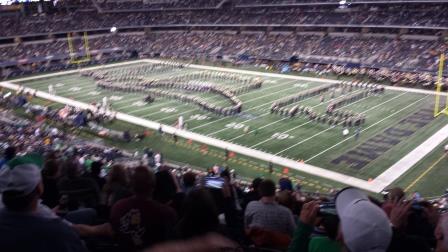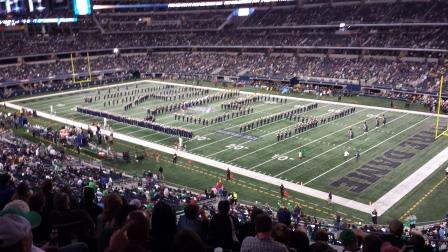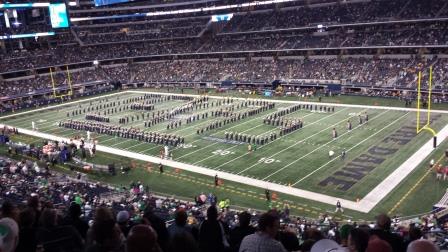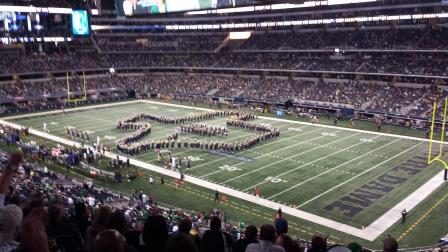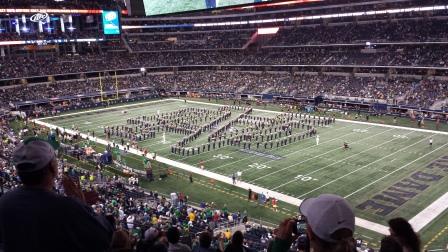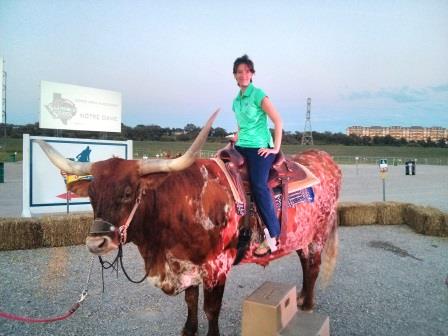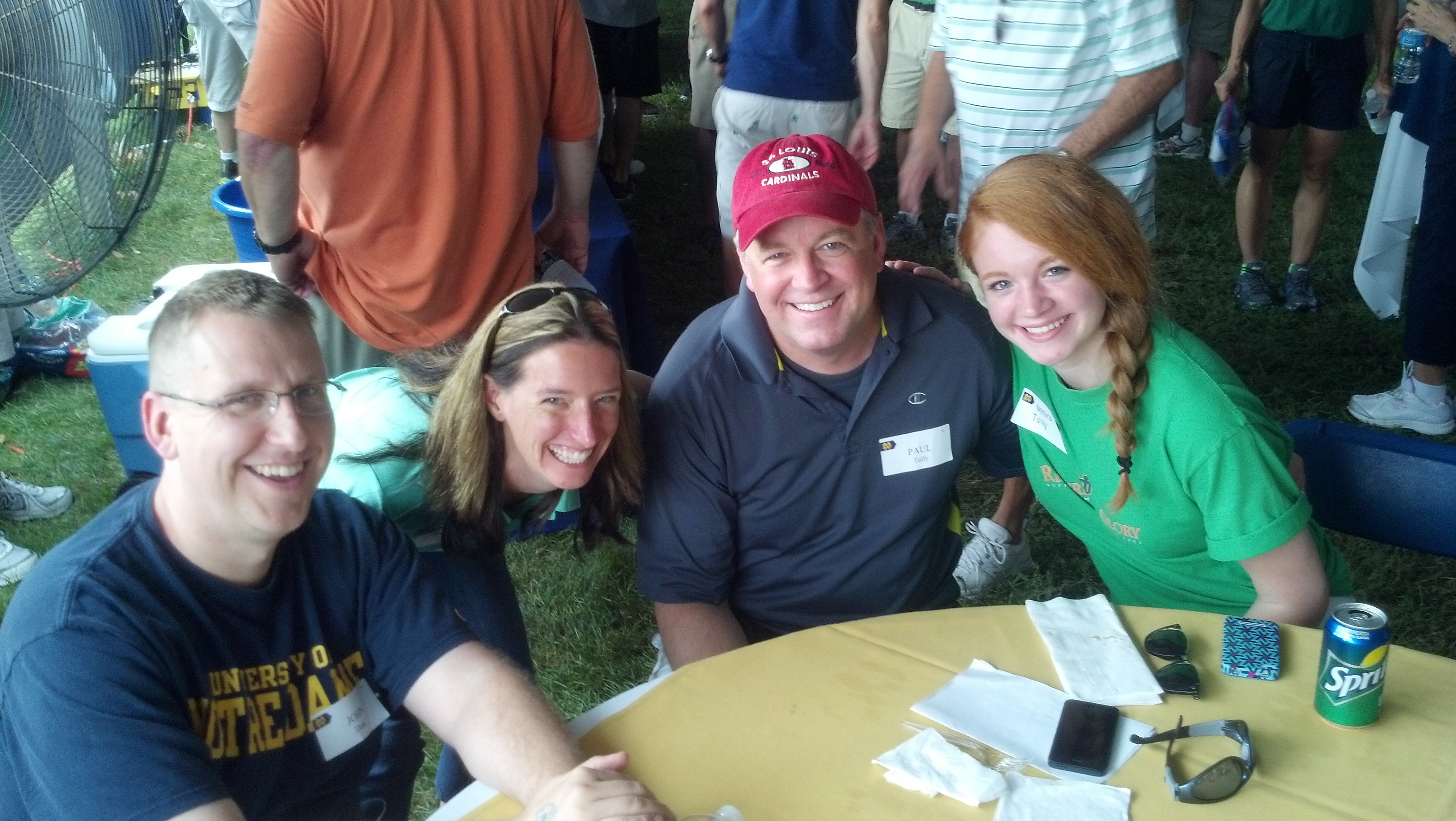An article authored by MSPL adjunct faculty member Hal Milton[1]
Overview
1. New American Inventors Act:-when to file a patent application.
2. Factors for filing utility patent application.
3. Price for preparing and filing a utility patent application.
4. Quality of Patent Application.
5. Patent Portfolio Owner Actions for P&Qs
I. American Inventors Act=First to File
The major change in the new law is from “first to invent” to “first to file a patent application.” The practical consequence of this change is that there is a risk in disclosing a new product to customers before filing a provisional patent application. In the past, an automotive supplier would disclose a design concept to a customer to determine interest and could rely on records of prior invention to secure patent rights by “first to invent.” However, now that potential customer could actually file a patent application on that disclosure and obtain a patent. That likelihood is greatest when that customer tweaks the design and files a patent application on that tweaked design. Accordingly, before a product design is disclosed to customers, a provisional patent application should be filed to stake the claim to ownership.
A provisional patent application need only be a complete description of the new product design. This description can be prepared by the inventor and filed without the input or expense of a patent preparer. The only expense would be the United States Patent & Trademark Office (USPTO) filing fee (currently $130 for a small entity and $260 for a large entity).
In order to claim priority to the filing date of the provisional patent application, a utility patent application must be prepared and filed within one year. In order to provide sufficient time for preparation, a decision to file the utility patent application should be given to the preparer of the utility patent application at the absolute minimum of one month before the end of that one year. Any less than one month has the potential of significantly reducing quality.
II. Factors Justifying a Utility Patent Application
The filing of patent applications falls under the umbrella of protecting the investments in developing and marketing company products. That umbrella covers preventing the copying of a company product by competitors, simply preventing the competition from making a competing product, and/or cross licensing with a competitor in the event of interleaving patents to avoid litigation. Also, under that umbrella is the building of company value, real and perceived. Investors will view a company without patents as a commodity company, whereas a portfolio of patents will render a company proprietary by having a protected market. In a few instances, the only objective is merely defensive to prevent patenting by others, in which case the quality of the utility patent application is usually not as important as simply having a defensive publication.
The specific factors justifying the filing of a utility patent application fall in a range and differ from invention to invention. The filing of a utility application providing only very specific or detailed coverage is clearly justified when the product is definitely headed for production, i.e., commercial value. The filing of a utility application at the other end of the spectrum providing very broad patent protection to potentially cover a concept employed in variations of products is clearly justified for all of the reasons set forth above to protect company investments. However, a utility patent application of intermediate patent protection, neither broad nor narrow, is often difficult to justify when the commercial potential is uncertain. Because budget constraints usually prevent the filing of a utility patent application on every invention, the prioritizing to file utility patent applications should have input from engineering, marketing, and management, as well as the patent attorney. This can be efficiently executed by a monthly or quarterly patent meeting, one of which is used to set a budget for the following year.
The patent attorney should be authorized to search the prior art for each provisional patent application before the expiration of nine months after filing the provisional application in order to leave sufficient time for prioritizing and preparing a utility patent application. A search report can be reviewed at the patent meeting to present the potential scope of patent protection allowed by the prior art. It is essential to find the most pertinent prior art, not only to prioritize the filing of a utility patent application by integrating scope with commercial potential, but to also draft the patent application around and to differentiate from that prior art by setting forth a new element and/or new result.
At the patent meeting, management can be effectively represented by general corporate counsel to control the budget and to build corporate value. The patent attorney and engineering personnel work together to set forth the potential scope of patent protection and identify products to be covered. Marketing or sales is a determinative input by providing the likelihood of those products being commercialized, either by the company or a competitor. Individual inventors are often invited to present their inventions. Notwithstanding a company being a leader in a technology and having an in-house prior art collection, every invention should be searched on the internet. In order to justify filing a patent application, there must be something new relative to the prior art, i.e., a new element and/or a new result. In actual experience, these monthly meeting work extremely well; a patent application was rarely abandoned because of prior art, and yearly patent budgets were consistently within five percent (5%) of projections.
III. P-Price for Filing a Utility Patent Application
The patent preparer should organize and lead the patent meeting to review prior art patentability searches and to reach a consensus for filing utility patent applications. A report of the prior art search and scope of patentability prepared for the patent meeting should be about $1200-$1600, depending upon the technology. As verified by the cases covered in the training book, a search of the prior art is essential, both technically and economically.
The American Intellectual Property Law Association (AIPLA) economic survey indicates the median cost in the U.S. of a utility patent application on a mechanical device of minimal complexity is $7000.[2] In the automotive business in Southeast Michigan, it is between $5000 and $7000 for an application of minimal complexity and a survey of five attorneys averaged $5500. Anything less than that and quality begins to suffer.
The average expense for patent drawings is $400. The filing fees are $800 for a small entity and $1600 for a large entity. However, if the application is first filed under the Patent Cooperation Treaty (PCT), the filing fee is $4000 in order to delay by thirty (30) months the decision for filing in individual countries.
In summation, for Southeast Michigan the total expense for filing a utility patent application, including provisional filing fee, a search and report, preparation and filing fees, is about $9000 for the U.S. and $12,000 for first filing under the PCT.
If the application is drafted around the results of a reliable search, the expenses incurred in prosecuting that application before the USPTO should be about $4500 plus an $1800 issue fee. The average total cost to obtain a U. S. patent is about $16,000, and $19,000 if first filed under the PCT.
As illustrated in the training book, price does not correlate with quality and many of the litigated patents are defective, particularly in landmark U. S. Supreme court cases. Unfortunately in many instances, quality goes down as price goes up! This is particularly true with extended prosecution before the USPTO to find allowable claims in applications prepared without a search. Although increased pricing is not always a guarantee of quality, pricing insufficient to support a skill level and adequate time negates quality. Some patent owners tend to force commodity pricing below levels sufficient to maintain quality, yet spend millions to litigate the resulting low quality patents.
IV. Q-The Quality of a Utility Patent Application.
A. Lack of Quality Standard
As the patents in litigation opinions confirm, the patent preparation process lacks a universal standard of quality (Q) for the content of the sections of a patent application and that patent content varies from patent to patent.[3] Much information exists to determine pricing but there is no universally applied step-by-step methodology to inter-relate the content of the sections in a patent application and to lead one in a specific order through a step-by-step preparation of those sections. No published standard exists for preparing a patent application to which all may refer in pursuit of quality. There are conflicting techniques and different standards from different attorneys, even in the same firm or organization. Appellate opinions of courts in patent cases confirm that the content and consistency of patent applications vary in direct correlation to the number of patents litigated.
The existing seminar programs are typically hours in length to satisfy the Continuing Legal Education (CLE) requirements of many state bar associations and are inconsistent. These programs teach the dos and don’ts of patent content by reviewing the mistakes of others. There is no existing program that converts such mistakes into a step-by-step how-to methodology with specific instruction as to the content of each section of a patent application.
Since there is no yardstick for quality, patent preparers are selected upon relationship, recommendation, compatibility and/or reputation. Patent preparation and prosecution is frequently assigned to a firm or attorney having a reputation as a patent litigator; however, the first criteria for a patent preparer is the ability to completely understand the invention and engineer equivalents that the inventor had not conceived to order to craft the broadest possible patent protection, i.e., to cover concepts not just preferred embodiments. Patent prosecution requires a completely different set of skills than litigation. Patent prosecution requires technology skills whereas litigation requires skills in legal procedure, discovery and trial work. B. Drifting Skill Level
Accordingly, the practice of patent law can be divided into patent prosecution and patent litigation with legal opinion work in between. Patent attorneys in law firms typically begin their career as associates fresh out of law school to learn the preparation and prosecution of patent applications. However, over the first few years these associates aspire to and drift into litigation. As a result, a significant portion of patent prosecution is repeatedly performed by the skill levels of associates drifting between the zero to four (0 – 4) year experience levels, albeit they may be monitored to various degrees by mentoring attorneys.
The quality of patent prosecution by associates is totally dependent upon the skill and techniques of the mentoring attorney and the time devoted to review and editing, which is limited by the priority of other client demands and by the commodity price not being able to support billing time for both the associate and the mentoring attorney.
There are a number of conflicting and stressful factors in patent prosecution handled by associates in law firms. The greatest stress results from preparing a patent application within the number of billing hours allowed by a commodity price. A typical hourly billing rate assigned to the new associate is about $200 per hour. The first patent application prepared by a first timer requires about fifty (50) hours. The billing for this application would total 50 hours x $200/hour = $10,000. However, using the AIPLA median cost of $7000 for a patent application, this patent application is over budget before adding the time for review by the mentoring attorney. Until the associate’s skill level and efficiency improves to meet the commodity pricing, the associate’s time will be cut, i.e., unbilled and lost. Or the quality of a quickly prepared patent application will suffer. Another important factor is that not all associates have the aptitude or the desire to reach a marketplace skill level or simply to attain billing hours, thereby contributing to a high attrition rate of new associates. Some law firms plan on keeping twenty percent (20%) of new law school graduates at the end of three or four years. Most law firms will agree that it costs the firm between $150,000 and $250,000 for each such new associate in patent law retained after three or four years. The high cost of training is clearly indicated by a survey of job placement advertisements where the demand is for associates with a minimum of two years of experience.
Even an associate retained after three or four years continually spends less time in patent prosecution due to billing pressures. The rate at which the associate gains skill in patent preparation diminishes in proportion to the increase in hourly billing rate. The associate’s hourly billing rate is increased each year and at some point the hours required to draft a patent application will exceed the marketplace commodity price, or the client is simply paying above commodity pricing or paying for sub-standard quality. As an example, an attorney who has reached an hourly billing rate of $500/hour cannot, no matter how skilled, draft a well thought-out patent application in eleven (11) hours to meet the commodity price of $5500. Accordingly, as the associate’s hourly billing rate increases, the associate seeks out other higher paying work, such as legal opinion work and litigation support. In fact, the AIPLA economic survey indicates that law firm associates spend only forty-eight and one half percent (48.5%) of their billed time on patent prosecution.
C. Institutionalizing Skill Level & Product Knowledge
The more years a patent preparer spends in the same technology, knowledge of the technology increases along with patent prosecution skill level. There are economic benefits when a patent prosecutor works with the same examiners in the same technology with quality patent applications over a long period of time. As the court opinions verify, the skill of a patent preparer should be weighted toward the technology as distinguished from litigation advocacy skills.
There is no requirement for an examiner in the USPTO to have a law degree. The examiners in the USPTO are assigned applications to examine relating to an area of technology matching the degree in science held by the examiner. A person with the requisite technical background can take the patents agent’s exam administered by the USPTO to qualify to represent patent owners before the USPTO. Some companies hire patent agents dedicated to prosecute patents in the company’s technology. Typical is the utilization of PhDs as patent agents in chemical and biotech companies. The skill level in preparing a patent application is an individual attribute and not directly correlated with being an agent or attorney, both can reach the same quality with proper training and consistent mentoring. In recognition of this approach, the University of Notre Dame has initiated a Master’s program for graduates of scientific schools to qualify as patent agents and teaches a standard for the contents of a patent application in accordance with the training book. In patent prosecution, a patent agent must go through the exact same learning process as a new patent attorney and in this capacity the attorney is also operating as a patent agent. Patent agents are heavy in technology whereas associates become heavy in the law. However, as distinguished from the law firm associate who spends less and less time devoted to patent prosecution, the patent agent spends more and more time accumulating expertise in patent prosecution. Consequently, patent agents are retained in patent prosecution to accumulate very high institutional experience and skill levels consistently applied one hundred percent (100%) of the time. More specifically, because of the diversion of fifty percent (50%) of billing time to non-patent prosecution legal work by a law firm associate after three years, the experience and skill level of that law firm associate is sixty percent (60%) of that of a patent agent at the end of ten (10) years. The use of patent agents who do not aspire to a corner office in a prestigious law firm can result in a consistently higher quality of patent prosecution. Many patent agents who could be attorneys choose a lifestyle more balanced in time while still receiving a relatively high compensation. The perfect situation for an owner of an ongoing patent portfolio is to maximize quality while retaining commodity pricing is to use a patent agent(s) supervised by a patent attorney.
V. Patent Portfolio Owner Actions for P&Qs
A. Fixed Fees
The first responsibility of a patent owner is to be guided by the following quote from John Ruskin, an English author:
It is unwise to pay too much, but it is worse to pay too little. When you pay too much, you lose a little money. That is all. When you pay too little, you sometimes lose everything, because the thing you bought was incapable of doing the thing it was bought to do.
The common law of business balance prohibits paying a little and getting a lot. It cannot be done. If you deal with the lowest bidder, it is well to add something for the risk you run, and, if you do that, you will have enough to pay for something better.
There exists an array of commodity pricing for patent prosecution, which varies widely between geographical regions, but it is possible to reach an agreement for the patent preparer to charge a fixed price per patent application for a steady stream of patent applications in an identified technology, i.e., a fixed fee arrangement.
B. In House Organization
Inventors should be given an incentive to turn in invention disclosures which can be filed as provisional patent applications. A periodic patent meeting should be held to prioritize the filing of utility patent applications. The benefits are first to determine whether a provisional application should be searched to determine potential scope of patent protection and secondly to determine which inventions justify a utility patent application based upon the integration of patent scope with potential commercial use.
C. Selecting Outside Patent Preparer
Recognizing that the standard for quality varies widely among experienced patent preparers and that there is no universal standard for quality, two parameters should be established for selecting a patent preparer. The first is a program of training and mentoring under one mentor and the second is a written standard for the content of each section of a utility patent application.
To qualify, a law firm should hire and train a cadre of patent preparers who undergo a training program in which the patent preparers dedicate full time to preparing patent applications and responses to rejections from the USPTO. The training would teach a step-by-step universal methodology with specific instruction as to the content of each section of a patent application based upon an analysis of numerous appellate opinions. The training should be executed by one mentor dedicated to training all of the trainees and mentoring the patent preparers; as a result the skill level of such a trained patent preparer is brought up to the equivalent of a two year law firm associate to meet commodity prices in months instead of years. All of the patent preparers will then prepare patent applications to the same and consistent standard and quality established in the training program.
All law firms say that they have high quality standards for the content of a utility patent application but indeed the quality varies even among the attorneys in any given law firm. Accordingly, the law firm should provide a written syllabus for the training program and a step-by-step universal methodology with specific instruction as to the content of each section of a patent application based upon an analysis of numerous appellate opinions.
Other considerations are the years of experience of the training program mentor and the retention of trained patent preparers. Patent owners should recognize that patent agents are licensed by the USPTO and can be trained to the same skill level as an attorney to prepare and prosecute patent applications with examiners in the USPTO who are also non-attorneys.
With such an organized patent portfolio, patent owners pay a competitive price and receive an improved quality of patent prosecution, a quality that remains consistent throughout the patent portfolio. Law firms respond by instituting a written standard for the content of a utility patent application coupled with a program of training and mentoring. The USPTO will examine patent applications of a higher and consistent quality. All participants in the patent system will benefit.
The price goes down and the quality goes up .
[1] Thirty years (30) in patent boutiques and twenty years (20) in large general law firms in SE Michigan during which Hal has mentored approximately 100 new attorneys in the practice of patent prosecution and authored a training book used in a patent preparation course taught at Notre Dame University in a Master’s program dedicated to patent prosecution. Bio at: http://patentlaw.nd.edu/for-prospective-students/faculty/.
[2] The American Intellectual Property Law Association (AIPLA) published an Economic Survey in 2011 and reported median (midpoint) figures from 2010 and the median figures used herein are from that economic survey. http://www.aipla.org/learningcenter/library/books/econsurvey/2011
[3] The training book shows how to rank the patent presentation from 1 to 10 for likelihood of being successfully litigated.

